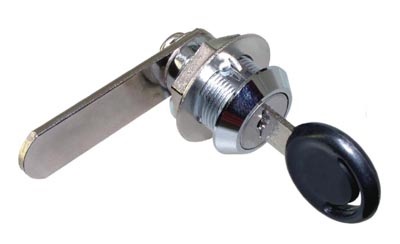A Guide to Furniture Lock Terminology
November 14th 2024
Understanding furniture lock terminology can be helpful when shopping for new locks, replacing old ones, or simply understanding how your existing locks function. Here's a breakdown of some key terms you'll encounter:
Lock Housing vs. Lock:
- Lock Housing: This refers to the body of the lock, excluding the inner cylinder and keys required to lock the housing.
- Lock: This refers to the complete lock and cylinder. Or the complete lock if no cylinder is required.
Lock Parts:
- Cylinder: This is the core of the lock where the key is inserted. It contains pins or tumblers that must be aligned correctly by the key for the lock to open.
- Cam: This is a rotating piece behind the lock that engages with the strike plate to secure the door or drawer. Normally found on Cam Locks.
- Bolt: This is the metal bar that extends from the lock body to secure the door or drawer. Sprung bolts are often referred to as Slam bolts.
- Nozzle: This is the part of the lock that goes through the door or drawer. Unless using a Turn Knob this is where the cylinder is inserted.
- Striker Plate: This is the metal plate mounted on the frame of the cabinet or drawer that receives the bolt from the lock. Or allows the cam to be secured behind it when used with Cam Locks.
- Keyway: This is the slot in the cylinder where the key is inserted.
- Turn Knob: This is a knob fixed into the lock nozzle which, when turned, will open and close the lock.

Lock Types:
- Cam Lock: A popular choice for cabinets and drawers. It features a cylindrical body with a rotating cam that engages with the striker plate. Cam locks may also have a threaded body for use in different materials.
- Cylinder Lock: Uses a key to operate a cylinder that engages with pins or tumblers. A common type for furniture, doors, and other applications.
- Rim Lock: Mounted on the surface of the door or drawer. Ideal when a mortise lock (installed within a pre-cut cavity) cannot be used.
- Padlock: Portable lock with a shackle that secures through a hole and is secured with a key.
- Combination Lock: Uses a combination of numbers to unlock. Good for situations where a key is not required. Ideal scenario for lockers.
- Mortice Lock: This type of lock is fitted into a cut out in the door or drawer.
- Espagnolette Lock: Uses bars and hooks to rotate and secure around a striker when locked.
Lock Features:
- Keyed Alike: Multiple locks operate with the same key.
- Keyed To Differ: Each lock requires a unique key.
- Master Key: A single key opens multiple locks, often used alongside keyed to differ locks for greater access control.
- Push-Button Lock: Uses a button combination for unlocking.
- Combination Lock: The combination can be changed by the user.
- Removeable Cylinders: Most lock types can be supplied with removeable cylinders for easy replacement and greater flexibility.
- Right Hand, Left Hand and Drawer: Locks can be sourced for their specific purpose and position on the door or drawer.
Additional Considerations:
- Finish: Furniture locks come in various finishes such as chrome, brass, or nickel plated to match the furniture's style.
- Material: Locks are typically made from steel or brass for durability.
By understanding this furniture lock terminology, you'll be better equipped to choose the right lock for your needs and ensure your furniture and belongings are properly secured.